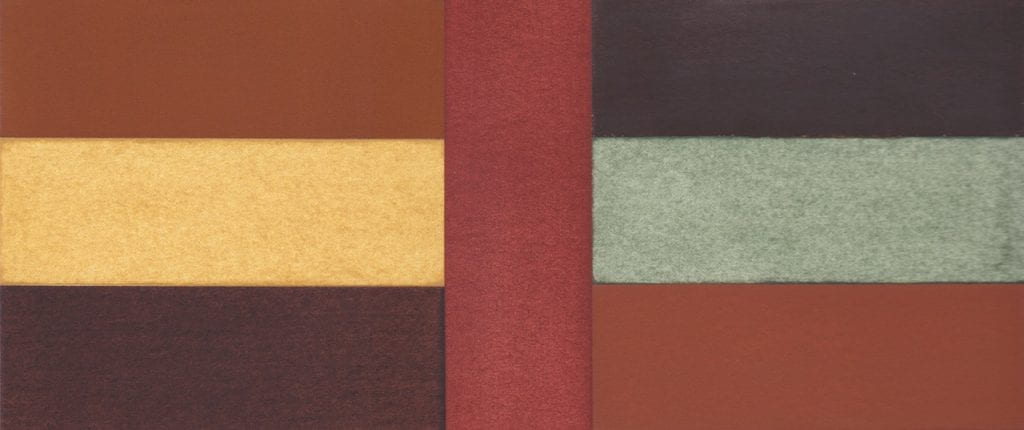A Colour A Day: Week 30
By Ruth Siddall, on 18 October 2020
A Colour A Day: Week 30. 12th-18th October.
Jo Volley writes…
In October 2015, whilst on research leave, I travelled around Provence visiting pigment quarries, mines and factories to look at pigment manufacturing methods and processes. In this marvellous red landscape, I have never felt such a strong emotional relationship between the landscape and painting. The trip was also something of a pilgrimage to visit the bibliotheque in Aix en Provence to view a remarkable manuscript made by the C17 Dutch artist A. Boogert who in 1692 completed an educational manual of how to mix every colour available to him. Each pigment is bound in gum Arabic and applied to paper with instruction as to their properties, proportions and potential. It is an extraordinary document of the pigments available at that time and of an artist’s dedication to learning. It was a humbling experience to hold in one’s hands this rare and beautiful manuscript, and to feel a connection with Boogert’s endeavours. The timeless and common manufacture of binding colour and making paint. The sheer pleasure of it… and its desire to communicate. It has also been the inspiration for this project.
Each red earth is bound in gum Arabic on W&N watercolour paper.
Collected: Sentier des Ocres, Roussillon.
Purchased: Sentier des Ocres, Roussillon.
Purchased: Sentier des Ocres, Roussillon.
Collected: Les Mines des Bruoux, Gargas.
Collected: Mathieu Ocre Usine, Roussillon.
Purchased: Les Mines des Bruoux, Gargas.
Purchased: Mathieu Ocre Usine, Roussillon.

 Close
Close










